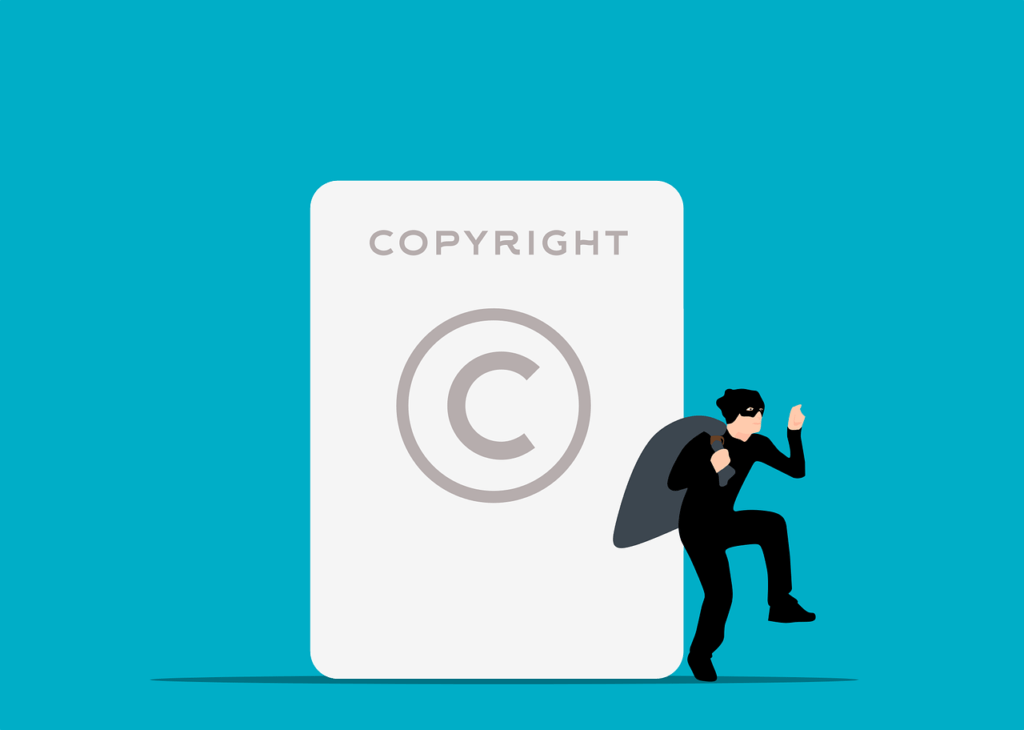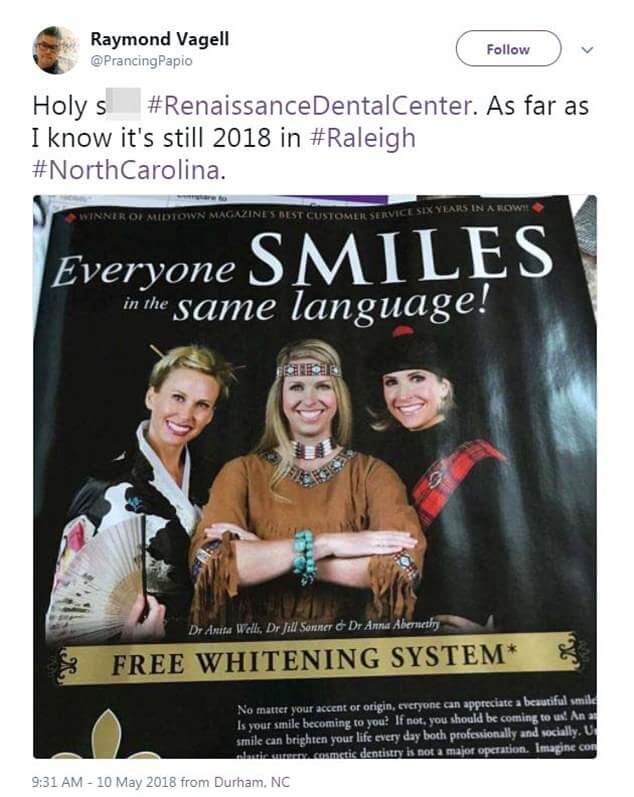
The world is changing fast. Technology is drawing us closer and closer, and for most, learning about other cultures and cultural values is only a click away. The global village has brought us many benefits, but one of those that many organizations and individuals have not been prepared for is the discussion around cultural appropriation and the harm it can cause. The cultural impacts are many. From violating cultural intellectual property to parodying and othering visible minorities, cultural appropriation can help cement discrimination and prejudice. It can hurt in an economic sense too. The victims often lose out on business opportunities and organizations and individuals found guilty of this type of theft often find their image damaged, trust eroded, and may face penalties in court. So, let’s take a look at this practice and learn how you can avoid it in your next mobile truck advertising campaign.
What is Cultural Appropriation?
In recent years, the image of young, often white, women and men wearing Native American ceremonial feathers and facial marking at Coachella or other large music festivals has become what people think of when we talk about cultural appropriation. But it comes in several forms. Elected officials being caught in blackface or treating cultural wear as a costume. Instagram influencers in box braids “blackfishing” their fans. Cheap Halloween costumes based on racial stereotypes. The list goes on.

Image Source: Oxford Dictionary Definition
The Oxford Dictionary defines the practice as: “A term used to describe the taking over of creative or artistic forms, themes, or practices by one cultural group from another. It is in general used to describe Western appropriations of non‐Western or non‐white forms, and carries connotations of exploitation and dominance.” Historically, this practice was common in the art world. Germany looted bronze figures from Benin and artists like Picasso and Matisse drew the “inspiration” for their work directly from stolen artwork from Asia and Africa. Even Hollywood history is littered with examples of cultural theft. Cultural appropriation is deeply linked with European colonial history and the harm that it caused worldwide.
The Harm It Causes
For those not affected by it, cultural appropriation can seem tasteless but harmless or just another business practice. Others argue that cultures borrow from each other all the time and that a culture cannot own a practice, or textile pattern. At face value, those arguments can be convincing. Cultural borrowing is a common practice and promotes diversity of growth. An example of that is the adoption of Japanese anime among Western audiences. The difference between cultural appreciation (borrowing) and appropriation boils down to how the parts that are borrowed are used, why, and the impact that it has on the originating culture. A good example of why this is incorrect is what has happened to American Indigenous communities.

Image Source: Mohamed Hassan from Pixabay
Indigenous Native Americans have suffered a long history of repression and genocide, from the year after the first Thanksgiving to Standing Rock in 2016. Lands, lives, and their rights were taken from them for western expansion. Cultural appropriation continues this legacy. From Coachella feather headdresses and sports teams like the Washington Redskins, Hollywood representations of native American’s such as Tiger Lilly and the “Indian’s” of Peter Pan or Johnny Depp’s “Tonto” in The Lone Ranger, to the New Age community’s lifting of ceremonial practices of smudging or sweat lodges, “there is very little left of Native culture that has not been appropriated,” says Sebastian Braun. Braun is the director of American Indian Studies at Iowa State University. And as the above linked article goes on to quote him, “If Americans do not understand the way that Natives live, they will create laws based on their own understanding, which is false.”
The feather headdresses are not honouring the cultural legacy of the Sioux tribes from where they came, nor do those wearing them do anything to challenge the harmful stereotypes that the Sioux face, or pay for them to be made by Indigenous artists. The Redskins is a painful reminder of the practice of scalping innocent men and women, and again, continues the tradition of portraying them as “savages”. Cultural appropriation continues the practice of erasing the unique cultures of dozens of Indigenous cultures, amalgamating them into one historical stereotype while at the same time showing the people as being non-existent.
The Business Cost of Cultural Appropriation
But they are far from gone. In 2020, the Sealaska Heritage Institute, a Native Alaskan non-profit, sued retailer Neiman Marcus for copyright infringement and cultural appropriation. At the center of the case was a suit sporting Ravenstail and Chilkat weaving styles, which come from Tlingit, Haida and Tsimshian cultures. The suit was selling for over $2,500 US and draws almost completely from a 1996 robe designed by the late Rizal. The lawsuit claimed the brand violated the Indian Arts and Crafts Act (“IACA”). This act prohibits the “misrepresentation in the marketing of Indian arts and crafts products within the U.S.” Some called the case a “turning point” in our society that “might set a new standard for Indigenous intellectual property.” Already there are calls for Canada to adopt laws that protect Indigenous cultures. As well, earlier this year, Mexico accused clothing retailers Zara, Anthropologie, and Patowl for lifting textile designs from impoverished Indigenous weavers from the Oaxaca region.
Cultural appropriation can now cost brands and advertisers. Lawsuits, PR backlashes, and loss of trust and brand image are common consequences of campaigns accused of cultural appropriation. Dior faced a firestorm in 2019 after a commercial featuring Johnny Depp for his “Sauvage” scent was deemed racist and that it perpetuated harmful stereotypes. As mentioned above, the actor has faced criticism in the past for his portrayal of Native American stereotypes. And this is only the most recent example. Dior has a history of accusations of cultural appropriation.

Image Source: Mohamed Hassan from Pixabay
Another often-cited example is the disastrous 2017 Kendall Jenner Pepsi ad. The ad lifted a black rights protest and placed it square in the middle of the ad. Featuring Kendall Jenner, the ad showed her walking away from the commercial she is shooting, pushing away a black woman to join the protest before giving a police officer a Pepsi, quelling the protest. The tone-deaf ad cost over $100 million to produce and was almost immediately pulled amid huge public backlash. The damage control done afterward cost Pepsi millions more.
Learning From the Past and Growing Beyond It
The Internet has done a wonderful job drawing us ‘round the world closer together. With that comes conversations on how we can do better. Nowadays, it is not just one small group that we advertise to but often many. “Multicultural Marketing” is on the rise and learning from the mistakes of cultural appropriation can help brands and marketers transcend and grow. Here are some tips from the experts on how to avoid cultural appropriation in your next truck side advertising campaign:
- Educate yourself. Beyond picking up and reading books on anti-racism, there are a lot of resources out there for individuals and organizations. UNC offers a free resource for individual’s and organizations. Focusing on the JEDI Principles (Justice, Education, Diversity, and Inclusion), this resource can help users identify weak points within themselves and their organizations, and look at these issues differently.
- Honour the Culture. If your advertisement targets or product draws heavily from a minority group, an important earlier step is including them. For example, in October, Minnetoka announced that as part of redressing the harms its brand caused by appropriating Native culture, it had hired Adrienne Benjamin, a Mille Lacs Band of Ojibwe citizen, “to be the company’s reconciliation advisor.” It also apologized for its past behaviour and the harm it caused. Beyond that, the brand promised the following: Minnetonka says the reconciliation plan has five key commitments to the Native community, including improving the company’s diversity, making updates to brand language acknowledging Native American influence, design collaborations with Native artists, seeking out more business relationships with Native-owned companies and financial support toward Native causes. (from article)“
- Know Your Message.” Jasmine Moksha is an Igbo and Indian artist. In her article “Multicultural Marketing: How to Avoid Cultural Appropriation and Not Market Like Someone’s Racist Grandmother,” she discusses the important of clear marketing communication “when they incorporate another culture’s creative property or experiences into their work.” Asking what the message is, if it is expressed clearly or can be misinterpreted, and what potential harms, if any, it can perpetuate, are important early steps.
- “Know your History.” Mokska goes further. She asks that marketers take steps in understanding “what struggles minority communities deal with.” Like with step one, educating yourself on the history of the culture you are wishing to represent goes a long way to preventing harm and creating a healthy conversation with your truck side advertising campaign.
- “Do Not Whitewash Minority Groups” This point cannot be overemphasized. Whether it is casting a white person as a member of another ethnicity (think Scarlet Johansson in “The Ghost In The Shell”). An example of this is the campaign for tooth whitening for Renaissance Dental which featured three white, blond haired women in cultural costumes. The image went viral around the world with news outlets picking up the story and spreading it further. While the dental office responsible apologised, the Internet is forever and any time someone googles them, they will find this image. Whether you use mobile truck ads or traditional billboards, this is an important point. While your campaign may last only a few weeks or months, its legacy could be long-term, so it is important to carefully consider what you send out.

Image Source: Twitter
Closing Thoughts
There are more steps and efforts that advertisers and marketers can do to change how they impact the communities and cultures around them. Taking the time to do thorough research and understand how these issues can have lasting impacts can only benefit mobile truck advertisers in the long run.


